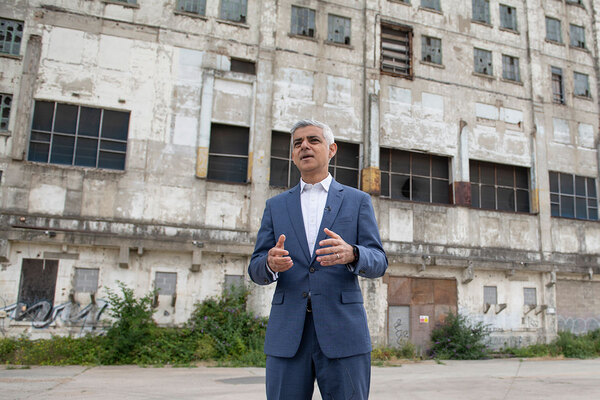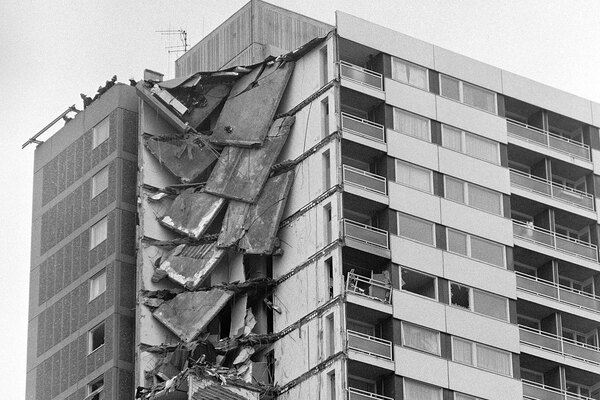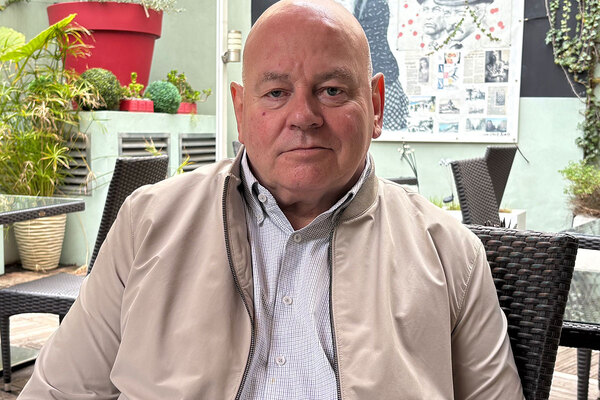Khan unveils details of new ‘rent control’ tenure for key workers
Sadiq Khan has set out details of his new ‘rent control’ housing tenure for key workers.

London’s mayor has outlined the ways rent could be set on new homes to ensure affordability for key workers such as nurses, teachers and bus drivers. He promised to build 6,000 such rent-controlled homes as part of his successful bid for re-election in May this year.
Mr Khan’s new intermediate tenure will be called Key Worker Living Rent (KWLR) homes. Rents and service charges will be capped and linked to the incomes of key workers, when first letting the home and “potentially” when re-letting them.
In a consultation on the plans, published yesterday, City Hall said it will work with local authorities, housing associations and house builders to develop the 6,000 KWLR homes.
Any KWLR homes grant-funded by the mayor will be let by a registered housing provider.
Mr Khan also suggested that NHS trusts or other public sector bodies with land holdings might want to develop KWLR homes.
The mayor already funds the development of intermediate rented homes under London’s Affordable Homes Programme, including shared ownership and London Living Rent (LLR), where tenants save towards a deposit. However, the consultation noted that not all key workers are “inclined to pursue homeownership”, and increasing numbers may not be able to afford to save for a deposit, even with below-market rents.
Mr Khan said he would consider if KWLR homes should “replace LLR homes as they currently exist, or sit alongside them”.
KWLR tenants will be subject to City Hall’s maximum household income threshold for intermediate renters – currently set at £67,000 a year – and their rent and service charge will be capped at 40% of the net amount of that income.
The consultation suggested a potential monthly rent and service charge benchmark of £1,099 for a one-bed home, £1,236 for a two-bed, and £1,373 for both a three-bed and a four-bed.
The benchmarks will be set annually and could be either London-wide or varied for each borough in line with local rents.
Rent rises could either be pegged to wages, rising by key worker income increases or 2%, whichever is highest; or pegged to Consumer Price Index (CPI) plus 1% like social rents. The consultation noted that rents would increase by more under CPI+1% than the wage-pegged approach.
Mr Khan said the GLA will review the cap regularly to consider changes in incomes and affordability. It will also consider allowing rent and service charges “over time” to exceed the household income threshold, but only if “affordability can be assured” via a direct link between rent indexation and changes in average incomes. This would mean providers do not have to “second-guess” future income thresholds.
City Hall will also consider whether “more certain approaches to increasing rents” could be permissible within a planning framework that “prioritises genuine affordability at completion”. This approach could help to provide more certainty to prospective investors and developers without compromising affordability.
Where they have been funded by the mayor, KWLR homes should only go to households who live and/or work in London and who do not already own a home or have the means to buy one on the open market.
However, if boroughs or housing providers have been unable to let them within the first three months of marketing, they may be allocated to those who are not key workers.
Tom Copley, London’s deputy mayor for housing, said that more social rent homes are still the priority for City Hall.
However, the housing crisis also affects “those on ordinary incomes: in work and earning a wage but still struggling to meet high housing costs in the capital”. These include “everyday heroes” such as nurses, teachers, bus drivers, shop workers and cleaners.
According to the GLA, 24% of private renting households in London spend more than half of their gross income on housing costs after housing benefit is taken into account. However, these people are unlikely to be allocated a social home as social landlords must provide their homes to people in highest need, including people experiencing homelessness, overcrowding or welfare issues.
Mr Copley said the new KWLR tenure would have a clearer link to key worker incomes and a simpler rent-setting process. For builders, he said the homes would provide more certainty over future rental income alongside “full backing in our grant funding and planning frameworks”.
The consultation on KWLR homes closes on 3 March 2025.
Sign up for our development and finance newsletter
Already have an account? Click here to manage your newsletters











